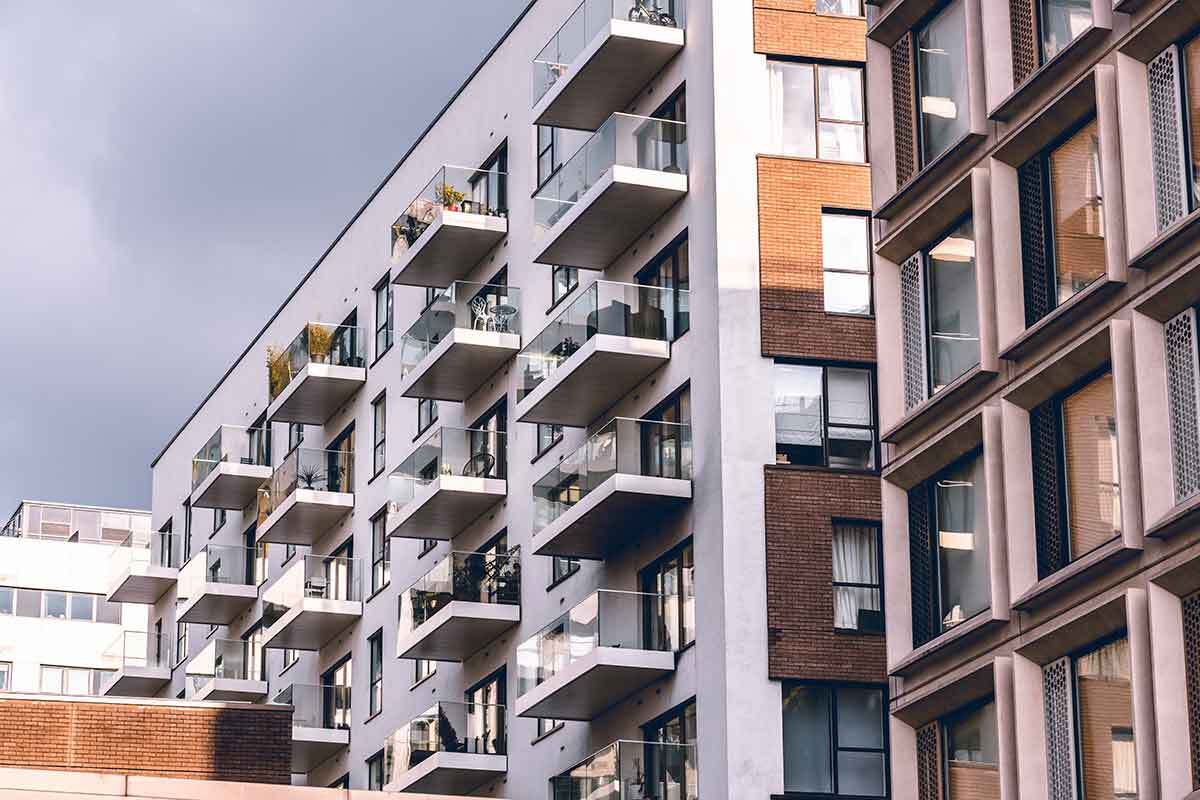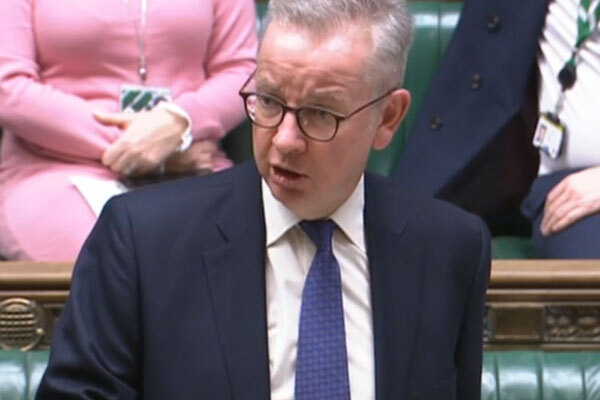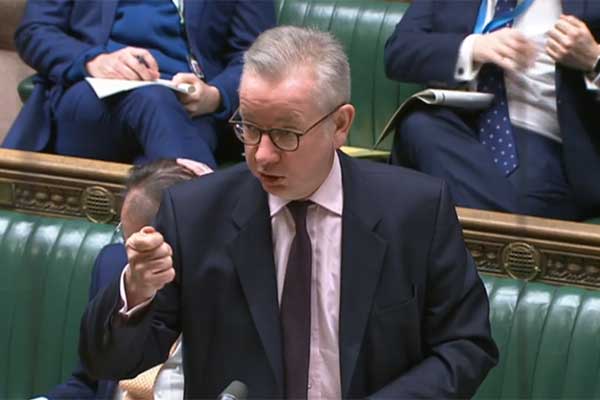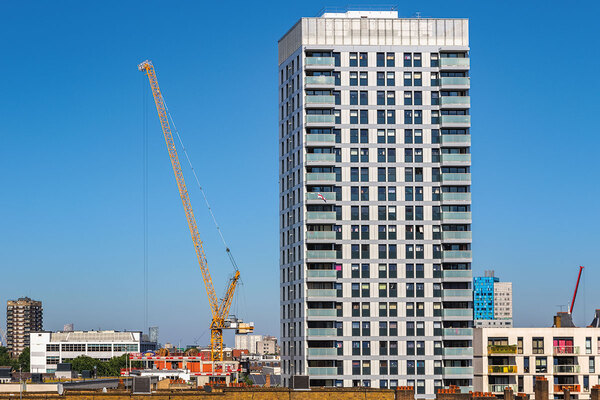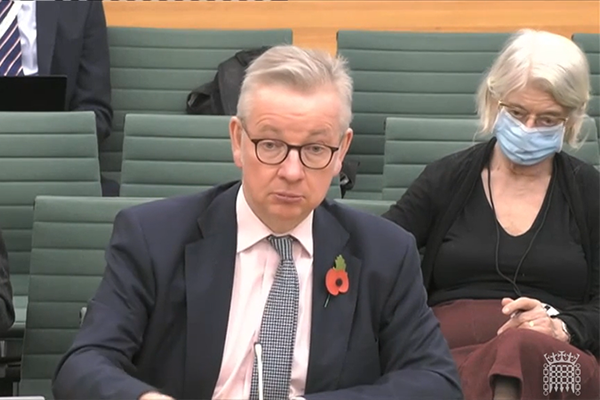You are viewing 1 of your 1 free articles
House builders face ‘shutdown’ if they do not pay cladding costs under new government plan
House builders face having their operations effectively shut down by the government if they refuse to contribute to building safety costs, as new sweeping plans to force the industry to pay for unsafe blocks are revealed.
The new plan, which is to be put to parliament in new amendments to the Building Safety Bill, will see leaseholders offered legal protection from cladding bills and other fire safety costs capped at £10,000 nationally and £15,000 in London.
However, these capped costs will only kick in if a series of new measures to raise funds from developers, building owners and the manufacturers of cladding products fail to provide full funding for the work.
The most draconian potential measures will include orders to prevent house builders who refuse to pay from receiving planning permission commencement or building control sign off for their projects.
A government source told Inside Housing: “They [house builders] thought we couldn’t do anything to force them to pay, but that was with our existing toolbox. This would give us the power to basically shut down their ability to build and sell houses.”
It comes as the government engages in negotiations with developers to extract an additional £4bn to pay for the remediation of cladding on buildings between 11 and 18 metres in height.
Residents of social landlords will see their bills capped, with the council or housing association landlord picking up any remainder. Under the plans, the social landlord will be responsible for the full bill if they were the developer of the affected property.
The cap is expected to be further reduced for shared owners according to the proportion of the flat they own – meaning a leaseholder with a 25% share of the property would have their fees capped at £2,500, or £3,750 in London.
A government spokesperson told Inside Housing: “Social housing providers will have to meet all non-cladding remediation costs where they have links to developer, or costs exceed the building safety cap.”
While government funding is available for cladding costs, bills for other works such as repairing missing fire breaks or removing timber balconies can be huge, with the most extreme examples exceeding £100,000 per leaseholder.
It is understood the government hopes to limit the impact on social landlords by legislating to ensure that the private developer pays for any flats sold to a social landlord under Section 106 agreements. It will also pursue the private sector partner in any homes built through a joint venture.
The cap on leaseholder costs is modelled on an existing ‘Florrie’s Law’, which limits the amount council landlords can bill leaseholders for major works and requires them to spread the cost over five years.
However, unlike Florrie’s Law, building safety costs will not be allowed to roll on for another five-year period after the first time they are imposed – making it a straightforward cap.
The government is also understood to be working on an exemption measure for leaseholders who would struggle to pay these bills. The government hopes this will prove to be a “backstop”, with only a small proportion of residents required to pay, in light of a dramatic extension of the state’s ability to force developers, building owners and product manufacturers to pay.
The £4bn the government hopes to raise from developers will be used to create a new formal building safety fund for blocks between 11 and 18 metres, to which social landlords will be allowed to apply.
New powers will also allow courts to impose remediation orders on both developers and building owners for non-cladding defects.
Attempts to sue developers have previously stalled, as many properties are no longer owned by the original developer which may have gone bust or been dissolved.
However, it is understood that assessments of the ownership of buildings which have so far applied for government funding showed that in up to 40% of cases, ownership can be traced back to the developer, despite being held by another company.
This runs against the received wisdom that developers rarely hold on to ownership of the properties they build and raised hope within government that a large proportion of the costs can be recouped from developers.
The government is also confident of forcing pension funds which own large property portfolios to pay. A source said that funds of this sort are “exactly the sort of target” the department has in mind with the new powers targeting building owners.
Funds such as Aviva, one of the country’s largest insurers and pension providers, own thousands of blocks around the country, with hundreds believed to be caught up in the building safety crisis.
The government will also introduce new powers to pursue the manufacturers of cladding and insulation materials, with the planned legislation granting the power to impose cost orders on any firm convicted under construction products regulation to make them “pay their fair share on buildings requiring remediation”.
Leaseholders will also gain new powers to sue manufacturers for “defective” products used on a home.
The new powers are understood to be modelled on the existing Defective Premises Act, which requires builders to ensure the homes they sell are “fit for habitation when completed”. The new power will come with a 30-year limitation period.
The Grenfell Tower Inquiry has heard extensive evidence about the testing and manufacturer of the insulation and cladding materials used on the tower, revealing that testing showing products performing badly during fires was suppressed by manufacturers with the materials remaining on the market.
Under existing law, residents have had no power to pursue product manufacturers for costs despite this evidence and the new law is designed to fill that gap.
It is also in addition to money the government hopes to extract voluntarily from these firms, under threat of exclusion from government programmes if they do not comply.
The building safety crisis, which has emerged following the Grenfell Tower fire, currently affects hundreds of thousands of leaseholders in flats around the country.
It has grown across the past four years despite repeated attempts by ministers to limit its impact. Michael Gove is the fourth housing secretary since the fire to attempt to provide a lasting solution to the issue.
Last month, he promised protection from building safety costs for leaseholders in blocks taller than 11 metres. He repeatedly told MPs that this would cover non-cladding works.
The government is yet to offer any protection for residents in buildings below 11 metres.
New guidance on assessing the risk from external cladding calls for a “proportionate” approach to works, but experts believe it will still result in some blocks below this height threshold requiring remediation work.
Sign up for our fire safety newsletter
Already have an account? Click here to manage your newsletters
